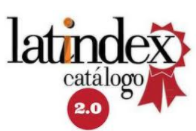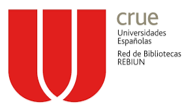From Chaos to Terror: Iraq Under the Shadow of the Islamic State (ISIS)
DOI:
https://doi.org/10.35305/cc.138.189Keywords:
Irak, Estado Islámico, TerrorismoAbstract
This article aims to analyze and identify the polítical, social, and security reasons that contributed to the power vacuum that engulfed Iraq in the years following the phenomenon of the Arab Spring, which played a crucial role in the seizure of territories by the jihadist group Islamic State in Iraq (ISIS). The selected time period (2011-2017) begins with the protests in Iraq that emerged in the context of the uprisings known as the Arab Spring in the Middle East and North Africa region, while the culmination point is in December 2017, when Iraq announced its triumph and the recovery of areas that had been captured and occupied years earlier by the jihadist group.
To achieve this objective, a compilation and systematic organization of literature is conducted, including official documents. Additionally, articles from scientific journals, books or their chapters, papers presented at conferences, reports from research centers, as well as notes and journalistic articles from Iraqi, regional, and international media are utilized.
Downloads
Published
How to Cite
Issue
Section
License
Copyright (c) 2023 Lourdes Azul Juri

This work is licensed under a Creative Commons Attribution-NonCommercial-ShareAlike 4.0 International License.
Aquellos autores/as que tengan publicaciones con esta revista, aceptan los términos siguientes:
- Los autores/as conservarán sus derechos de autor y garantizarán a la revista el derecho de primera publicación de su obra, el cuál estará simultáneamente sujeto a la Licencia Creative Commons Reconocimiento-NoComercial-CompartirIgual 4.0.
- Los autores/as podrán adoptar otros acuerdos de licencia no exclusiva de distribución de la versión de la obra publicada (p. ej.: depositarla en un archivo telemático institucional o publicarla en un volumen monográfico) siempre que se indique la publicación inicial en esta revista.
- Se permite y recomienda a los autores/as difundir su obra a través de Internet (p. ej.: en archivos telemáticos institucionales o en su página web) antes y durante el proceso de envío, lo cual puede producir intercambios interesantes y aumentar las citas de la obra publicada.
















